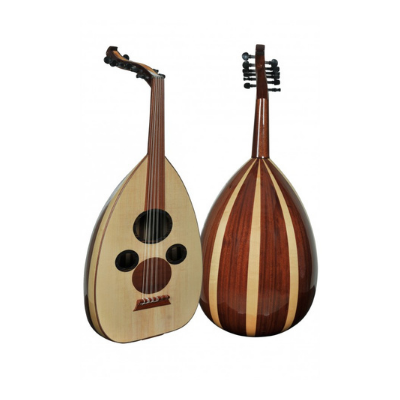History of Oud
The oud (also known as ud or ut in Turkish) is a popular instrument in Middle East countries. It’s even called ‘the king of the instruments’ in some countries. It has a very authentic sound that gives a mystical aspect to the instrument.
What is Oud?

Oud is a fretless string instrument with usually 11 strings in 6 courses. Being fretless is the most distinctive characteristic of the oud from a modern-day lute. Oud was played with a plectrum. It can be used in both traditional music and modern music pieces. There are different types of oud from region to region, also, it varies by size and material, but the main body remains a type of wood. You can find all these different types of oud on Sala Music website with good quality.
You may be interested: How To Learn Oud Effectively?
Which region does the oud belong to?

The oud is used in the Middle East, Central Asia, and North Africa countries’ music. It is an essential musical instrument, especially in countries like Egypt, Syria, Armenia, and Turkey. According to region, the oud’s size, sound, and even tuning system would be different. In most of these countries, it is used in traditional music, but it also appeared in modern music genres, even in pop and rock music.
What is the History of Oud?

The oud is considered one of the oldest musical instruments in history. It appears in wall frescos in Mesopotamian, and Ancient Egyptian tombs belong to 16th century B.C. Even though the shape of the oud is different from these paintings shows almost the same structure as the Persian barbat, which is considered Oud’s closest ancestor. It became the way it is today in the Islamic period and started to spread to all Middle Eastern Countries. The oud, which became the center of attention in the Ottoman palace in the 15th century, gained an irreplaceable value that the public began to use in classical Turkish music in the 19th century.
The oud instrument made its way to Europe through Spain. In the 13th century, crusaders brought it back to Europe, and in time, it became the lute. That’s why lute takes its name after the oud (‘le ut’ in old French), but it’s been added different features from oud, like frets.
There is also a biblical story about the history of the oud and its invention. This story claims that Lamech, a sixth-generation descendent of Cain, was the one who invented it. According to the legend, Lamech’s son died from an illness. But Lamech loved his son so much he didn’t want to bury him, so he hung his body from a tree. His decomposed body turned into a skeleton over time. Lamech carved an oud out of the tree which his son was hanged by making its shape look like his son’s remains, and he played this instrument by thinking of his dear son until the day he died.
You may be interested: Top 5 Oud Artists in the World





Leave a comment